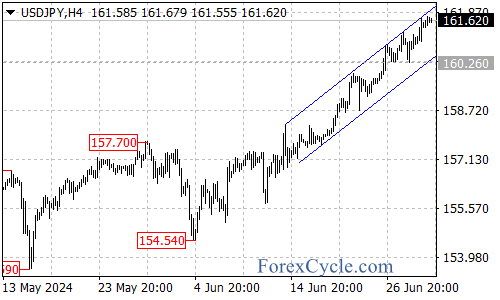The USD/JPY pair closed at 161.48 in New York trading, up 0.4% for the day. At one point, it surged to 161.72, marking its strongest level since 1986. Year-to-date, the yen has depreciated by over 12% against the dollar.

Key Factors Behind the Yen’s Decline
- US Bond Yields: The primary driver of the yen’s one-sided movement is the significant rise in US long-term bond yields.
- Japanese Economic Data: Recent data from Japan has been mixed:
- The confidence index for large non-manufacturing firms in June fell from +34 in March to +33, marking the first deterioration in two years.
- However, the sentiment index for large manufacturers rose from +11 in March to +13 in June, reaching its highest level since March 2022.
- Economic Uncertainty: The weaker-than-expected economic growth data has increased uncertainty about the Bank of Japan’s next move regarding interest rates.
Interest Rate Differentials
The stark difference in interest rates between the US and Japan continues to be a major factor pushing the USD/JPY pair higher. This trend is so strong that even if Japan were to intervene in the currency market, traders might view it as an opportunity to buy more dollars.
Looking Ahead
As the exchange rate moves further away from the 160 level, which was previously seen as a warning threshold, there’s a possibility of rapid upward movement in the near future.
In conclusion, the combination of rising US yields, mixed economic data from Japan, and the widening interest rate gap between the two countries continues to put pressure on the yen. Investors and traders should keep a close eye on these factors, as well as any potential intervention from Japanese authorities, as they navigate this volatile currency pair.

